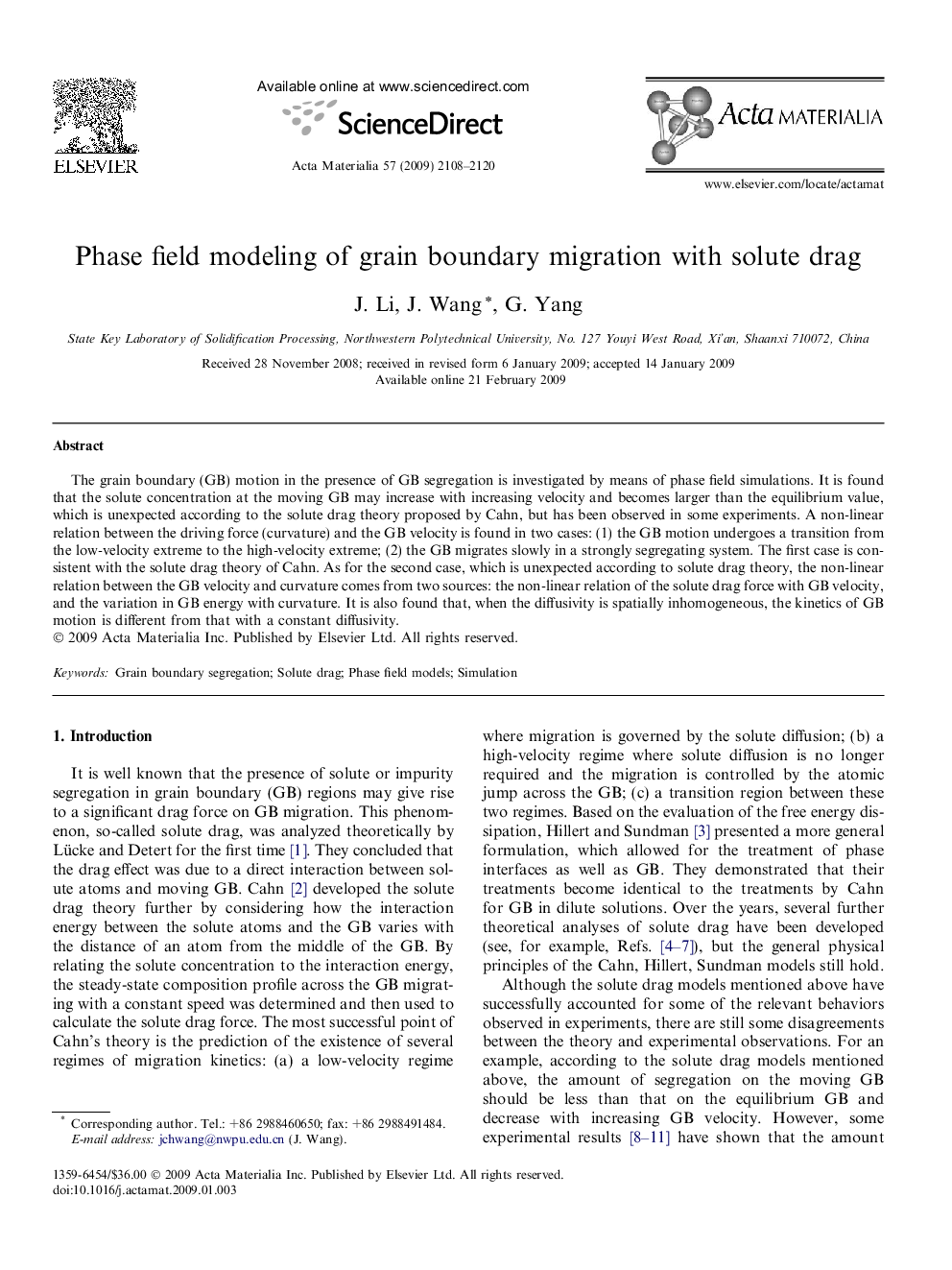| Article ID | Journal | Published Year | Pages | File Type |
|---|---|---|---|---|
| 1448592 | Acta Materialia | 2009 | 13 Pages |
The grain boundary (GB) motion in the presence of GB segregation is investigated by means of phase field simulations. It is found that the solute concentration at the moving GB may increase with increasing velocity and becomes larger than the equilibrium value, which is unexpected according to the solute drag theory proposed by Cahn, but has been observed in some experiments. A non-linear relation between the driving force (curvature) and the GB velocity is found in two cases: (1) the GB motion undergoes a transition from the low-velocity extreme to the high-velocity extreme; (2) the GB migrates slowly in a strongly segregating system. The first case is consistent with the solute drag theory of Cahn. As for the second case, which is unexpected according to solute drag theory, the non-linear relation between the GB velocity and curvature comes from two sources: the non-linear relation of the solute drag force with GB velocity, and the variation in GB energy with curvature. It is also found that, when the diffusivity is spatially inhomogeneous, the kinetics of GB motion is different from that with a constant diffusivity.
